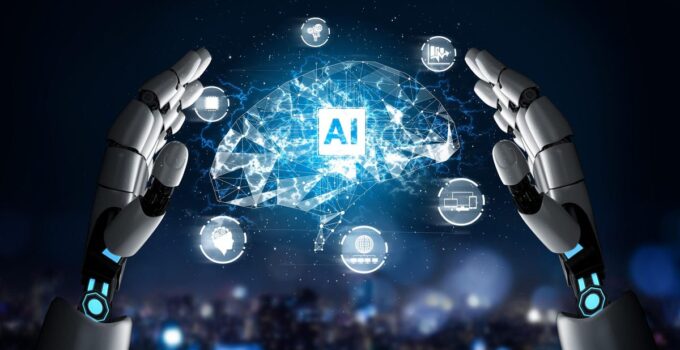Artificial intelligence, called AI for short, may not be the new kid on the block. But it’s making waves in the business world as more companies embrace the scope of its capabilities. Undoubtedly, AI is today’s hot topic as researchers ponder its possibilities and businesses put its limits to the test.
But how can companies leverage AI’s potential to boost achievements? A few ideas include improving employee retention, eliminating inefficient processes, and refining customer service approaches. Whether your business lacks experience integrating AI or is ahead of the curve, the technology can have a positive impact. Below are the top ways this hot commodity is helping companies improve performance levels.
Hire the Best

Source: inc.com
Most leaders don’t like to see their HR departments as revolving doors. When employees are constantly coming and going, it hurts the bottom line. High turnover can drain budgets, employee morale, and sales. But moving past the revolving door syndrome seems impossible when every hire is a gamble.
Intelligent business leaders realize eliminating all turnover is unrealistic, but continuing to make gut-driven decisions won’t help either. Even though talent acquisition managers believe they’re making objective choices, there’s a good chance they’re not. It’s human nature to see personal anecdotes as reliable data.
Hiring managers can benefit from more impartial insights from AI to make well-informed decisions about job applicants. This is where performance analytics can step in. According to twostory.com, AI-backed analytics predict which candidates are the best fit by using data from high-performing employees in specific roles. Business leaders no longer have to take bets on who will succeed in their position. With more reliable information, recruiters can select those most likely to stay and deliver results.
Automate the Simple Stuff
Repetitive jobs are comfortable. You know what to do and when to do it. The problem is there’s no variety, leaving little wiggle room for creativity. Repetition becomes boring, even for employees who like routine. And when people get bored, they tend to lose interest and make mistakes.
Known as the cousin of burnout, “boreout” is the latest term describing what happens when employees feel underutilized. Unlike burnout, boreout is a potential consequence of stalled professional development. Boreout can manifest when someone works in their comfort zone for too long and doesn’t grow their skill set. However, it can produce similar symptoms to burnout, such as irritability and stress.
These symptoms don’t bode well for business performance, as they impact customer service and work quality. AI automates repetitive processes, streamlining the tasks humans would otherwise perform over and over. Employees avoid possible boreout while companies eliminate inefficiencies, including costly errors. Also, redesigned roles allow workers to stretch their abilities, tackle complexities, and feel utilized.
Elevate Customer Service

Source: forbes.com
Customers want instant solutions, but humans are having a hard time keeping up with demand. McKinsey & Company’s research describes a “perfect storm” of challenges for companies striving to deliver positive customer experiences. Call volumes, client expectations, and talent shortages are all going up. In short, businesses have more requests than employees can handle.
It doesn’t take a study to predict this will lead to unhappy customers. No one wants to wait on hold or receive a reply to an email weeks after the fact. Some clients don’t even like to wait 24 hours. They want to solve their problems during lunch hours and before morning commutes.
Chatbots and self-service platforms can provide the answers customers seek when staff levels are low. These technologies are what companies are investing in as leaders make improving customer experiences their top priority. AI not only resolves pain points but also personalizes client interactions. In addition, AI tools feed contact center agents the data they need to evaluate complex scenarios like auto injury claim settlements.
Discover the Why Behind a Problem
Say your sales are down. It’s a discouraging trend that’s been happening for several months. Despite overhauls of your marketing strategy and sales training, the numbers aren’t moving in the right direction. Everyone’s scratching their heads as to why.
You could go back to square one with sales and marketing. But anything you do would be like taking a shot in the dark. Acting without an accurate diagnosis usually exacerbates the problem. Yet, leaders can make this mistake because they feel pressure to find a quick fix.
While it takes more than a cursory analysis to get to the root cause, AI helps diagnose issues faster. If sales are down, AI can sync data from multiple sources to determine what’s causing the symptom. It could be fierce competition and a lack of perceived product value. Lackluster numbers might also be because of excessive lag time between a lead’s first contact and follow-up from sales. Knowing what’s driving the problem increases the likelihood a fix will work.
Using AI to Enhance Performance

Source: forbes.com
For some business leaders, AI might seem like another bandwagon everyone’s rushing to hop on. However, AI becomes a helpful asset when executives put strategic thought behind its implementation. Investing in tools, including performance analytics software and chatbots, can raise the bar for different stakeholders.
With better data, decision-makers increase the accuracy of their conclusions. Employees have fewer reasons to leave, and clients get the service levels they expect. Even though AI can’t fully replace the human touch, it does boost its effects. Working together, human talent and tech can help companies overcome new challenges.







